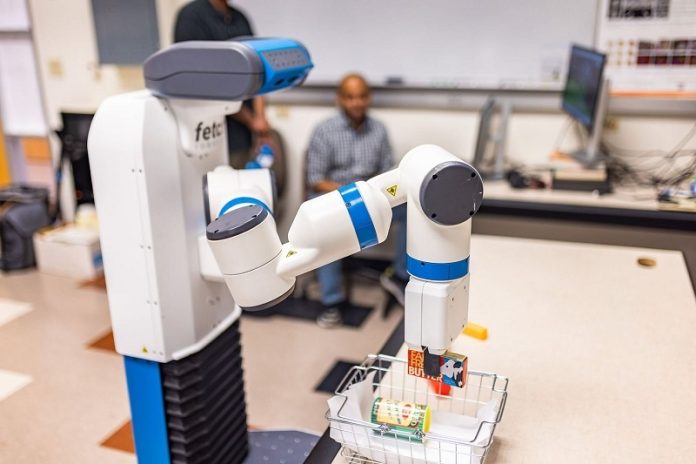
Researchers at The University of Texas at Dallas have taught a robot named Ramp to recognize different objects by pushing them around.
This might sound simple, but it’s a big leap for the world of robotics.
This discovery could one day make robots much smarter and more useful in homes or factories.
The old way of teaching robots to recognize objects was simple but limited. Usually, a robot would push or grab an object once and then try to remember it for next time.
But this new research makes robots act more like children learning to play with toys.
Just like a child would push a toy car around many times to understand how it moves, the robot, Ramp, pushes each object 15 to 20 times.
This lets it collect lots of pictures and information, making it better at recognizing the object later on.
Why does this matter? Let’s say you want a robot to bring you a bottle of water. The robot needs to know what a “bottle of water” looks like.
The new system helps the robot not only recognize one type of water bottle but different kinds as well.
It could be a big or small bottle, a known brand, or an unknown one—the robot would still know it’s a water bottle.
Ramp is a special kind of robot designed for these experiments.
It’s about 4 feet tall and moves around on wheels. It has a long mechanical arm with a “hand” at the end, which it uses to push or grab things. The robot uses a special camera that can also sense depth, making it better at understanding what an object is like.
The team’s leader, Dr. Yu Xiang, says this is the first system to use long-term interaction to help a robot get better at understanding objects.
In simple terms, the more the robot interacts with different things, the smarter it becomes. By pushing and examining objects multiple times, the robot gathers more data to make fewer mistakes later.
One of the students working on the project, Ninad Khargonkar, said that testing the robot in the real world has been eye-opening.
Algorithms or fancy computer codes are one thing, but seeing the robot actually get better at its job in a real setting was an incredible experience.
What’s the future of this? Well, the researchers want to make robots even smarter. They want to teach them to plan and control more complicated tasks, like sorting things for recycling.
They hope these new abilities will make robots more helpful in a variety of settings, not just in a lab.
While we’re still a long way from robots cooking dinner or cleaning the house, this research is a step towards smarter and more capable robots.
It might not be too long before you find a helpful robot making life easier in your home or workplace.
Follow us on Twitter for more articles about this topic.
Source: University of Texas at Dallas.



